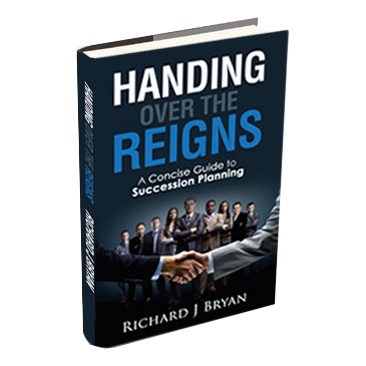Strategies and Insights to Fuel Your Company’s Long-Term Success
Business leaders get tired of settling for minor revenue increases without long-term, sustained growth. Yet changing a company’s established approach to business “growth” can feel like confronting an unassailable fortress. Unfortunately, fortresses don’t advance.
And neither will a business, as long as short-sighted practices remain unexamined.
So let’s look at the growth problem through a different lens. We’ll use the same lens used by top-tier companies who have created growth systems that work.
Five Essential Elements to a Growth System
I’ve pulled together for you, from this research and my own experience, some common actions taken by companies experiencing sustained business growth. These steps have worked for organizations as diverse as Adobe, Salesforce, my family’s car dealership group, and IKEA. Basically, those insights distill down to five essential elements:
-
- Building a cohesive leadership team of A-Players.
- Creating innovative, customer-informed target outcomes.
- Designing a blueprint for reaching growth-focused goals
- Allocating resources to growth-building capabilities.
- Leading with dedication to the planned system for growth.
We’ll touch on each one and then zero in on what you can do—starting today—to begin building a system to grow your company for the long-term.
Building a cohesive leadership team of A-Players.
In my experience, having A-Players at the top is the number one thing that leads to sustained business growth for small-to medium-sized enterprises. I define an A-Player as someone who is highly productive, consistently hits KPI-driven goals, and lives the core values of the company.
This type of leader possesses both the skills and experience needed for their role plus one more crucial ingredient: a great attitude. Each leader will need to rally around the growth system blueprint—more on that in a minute—and commit focusing their energies into optimizing opportunities for growth.
As Jim Collins wrote in Good to Great, “The good-to-great companies made a habit of putting their best people on their best opportunities, not their biggest problems.” He added,
“Good is the enemy of great. Greatness is not a function of circumstance. Greatness, it turns out, is largely a matter of conscious choice and discipline.”
So, populate your leadership team with people who will enthusiastically choose and take disciplined steps toward growth.
Creating innovative, customer-informed target outcomes.
Growing businesses are characterized by providing unique products and services their customers value.
So let’s begin there. What do your customers value? And how do you know that?
If you hesitate when answering these two questions, then your first step needs to be developing your listening skills.
Think about every point of contact you have with customers, whether in person, online, over the phone, at vendor exhibits, and so forth. What can you do at each contact opportunity to learn more about them? Find ways to ask them questions, like—
- How do you feel about our offerings?
- What would you like to see improved or expanded, removed, or restored?
- How do you use our product/service, and how often?
- Would you like help in understanding or making the most of our features?
- Which of our other products would you like to try?
- How do our products fit your lifestyle?
Highly successful businesses provide multiple avenues for customers to give them input. Then they apply what they learn to deliver new ways to please customers.
Here’s a real-life example of the difference customer feedback can make.
When I took the helm of my family’s car dealership company, we had a poor customer service record. Things turned around when we started listening to feedback. First, every time we sold a car or completed a service in one of our car dealerships, we did a manufacturer survey. Second, we ran a series of customer focus groups facilitated by a third party. My senior management and I met with small groups of customers to hear their feedback on various customer service issues. We were there not to defend or comment, but to listen and learn. Those meetings allowed us to adapt and create some very innovative service offerings. As a result, we went from being one of the worst performing dealers in the country in customer service to being in the top 10 nationally over a ten-year period.
As in this example, a company that wants to grow in the long term will differentiate its offerings from those of the competition. So, listen to why your customers buy from you—or why they went somewhere else. How could you satisfy their wishes in new ways? What untapped market is out there, waiting for your creative solution?
Once you have a clear, innovative, and customer-directed outcome in mind, you have a compelling target to reach for. You’re ready to build a system to get you there.
Designing a blueprint for reaching growth-focused goals.
To build a growth-generating engine, you need a specific, thorough plan. Your plan should spell out what you will need to deliver your customer-informed outcomes.
Get detailed. List things like:
- resources required
- necessary technology
- processes to put in place (or reinforce)
- types of data that will keep the system on track
Your system blueprint should also map out how all these elements will work together to accomplish your outcomes. With that plan laid out, you will see more clearly where gaps exist in your current system and where investments must be made to have the greatest impact on long-term growth.
For the blueprinting process, I like the Metronomics business growth system. This system includes a playbook that enables the CEO and their leadership team to create a dynamic repeatable process as well as a strategy that allows them to go from competing to be the best to competing to be unique in their market. This is where a company can gain a real competitive advantage.
Allocating resources to growth-building capabilities.
With your blueprint in hand, you can channel resources into creating or strengthening the capabilities of your organization that will power growth.
A couple of caveats are helpful here.
First, beware of silo thinking. Encourage leaders across all your functions to see themselves as collaborators, working together to achieve the plan. All departments play valuable roles in propelling the growth engine.
Second, don’t expect to build and implement a new growth system overnight. You will be working to meet near-term goals while prioritizing objectives of the new system. Challenge and inspire your team to come up with the highest-impact, most-differentiated outcomes that keep you moving toward long-term growth.
One way to bridge the gap between annual planning and your long-term vision is to create a 3HAG, (3-Year Highly Achievable Goal), as well as a 3-year rolling financial forecast. Unlike a budget, which is often a license to spend, a forecast shows clearly where your resources are best focused in order to help the company grow.
I just did this with my real estate business in the UK. It led to us getting out of building new single-family homes and concentrating our efforts and resources on residential remodels and commercial real estate investments. These are both more predictable and require less capital. If we had stuck to the traditional method of only producing a 12-month annual budget, we would have missed this important trend.
Leading with dedication to the planned system for growth.
In companies with functioning growth systems, fully committed leaders are the impetus behind creating, promoting, and supporting those plans. They make the growth system so central to business operations that even as products and services change, expand, or phase out, the company’s growth continues.
Such leaders will keep the growth engine fueled and tuned up through continually updated insights. They will provide management structures that support growth efforts and require regular reporting on progress toward growth-powering objectives.
An A-Player leadership team will build a system that not only allows clarity around the long-term strategy of the company but also communicates that strategy clearly throughout the company. They will cascade the key messages down through the different levels, making sure everyone—whether a VP of sales, a receptionist, or a technician—understands how they can contribute to organizational growth.
Where to Begin
Creating a system to generate sustained growth for your business may sound like a daunting endeavor. It will require shifting mindsets and re-evaluating processes and optimizing customer feedback opportunities. In short, it will call for change.
Do you need to shore up your leadership team? Do you need to develop better listening skills? Set goals that prioritize lasting growth over mere cost-cutting and revenue-tweaking? Re-examine the direction your resources are flowing? Unite leadership behind a compelling plan to expand growth opportunities?
Don’t wait until your numbers dive dramatically or another market disruption up-ends your current plans. Consider bringing a coach onto your team now to help you ask the hard questions and find growth-focused solutions.
That’s what worked for me. And I’d be happy to help you develop a successful business growth system of your own, too.
Want to grow your team so you can also grow your business? Click here for more information about CEO & Leadership Team coaching.
Sign up for our mailing list to be notified of upcoming events. You will also receive a free copy of Richard’s eBook “Top 7 Business Succession Planning Tips.”
Related Topics:
Are You Ready to Put AI to Work Growing Your Business?
Developing Leaders in the Family Business: 3 Tips for Creating Positive Outcomes
Recession Proofing Your Business – Podcast with Richard Bryan & Mass Mutual CEO, Brian Trzcinski


